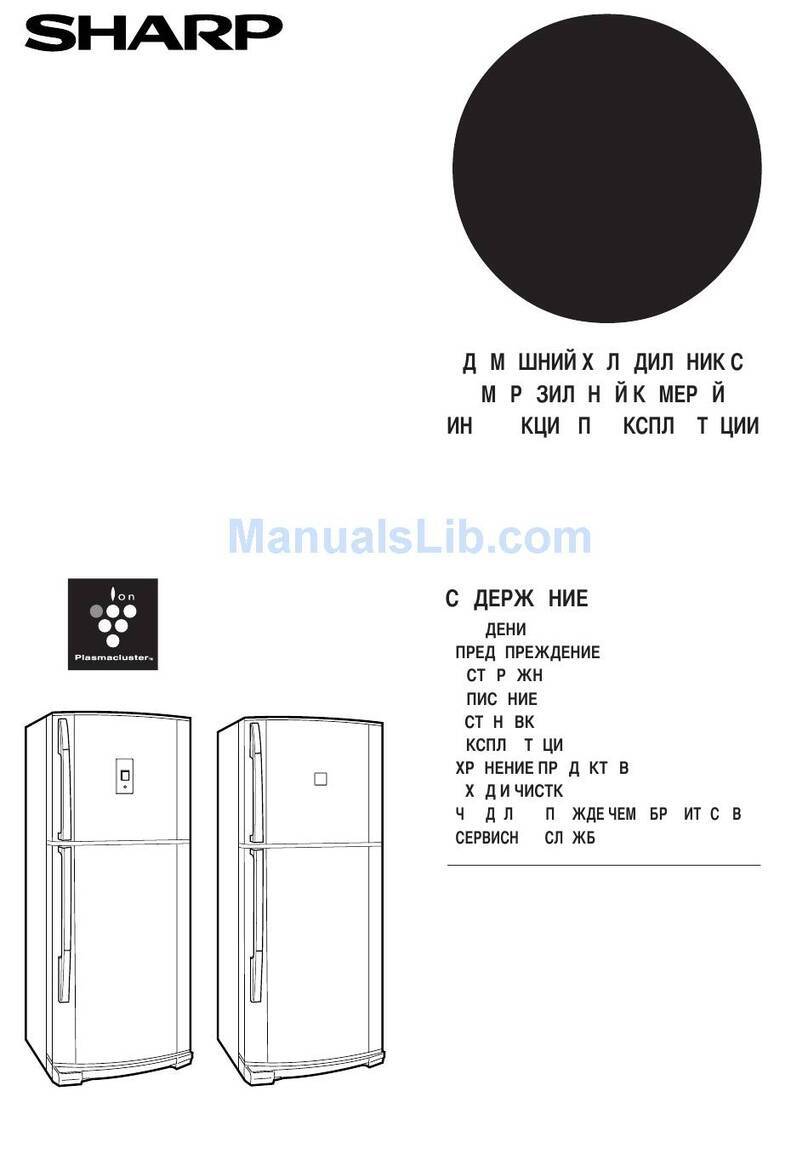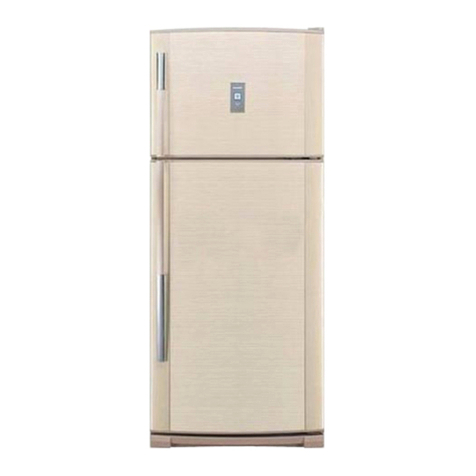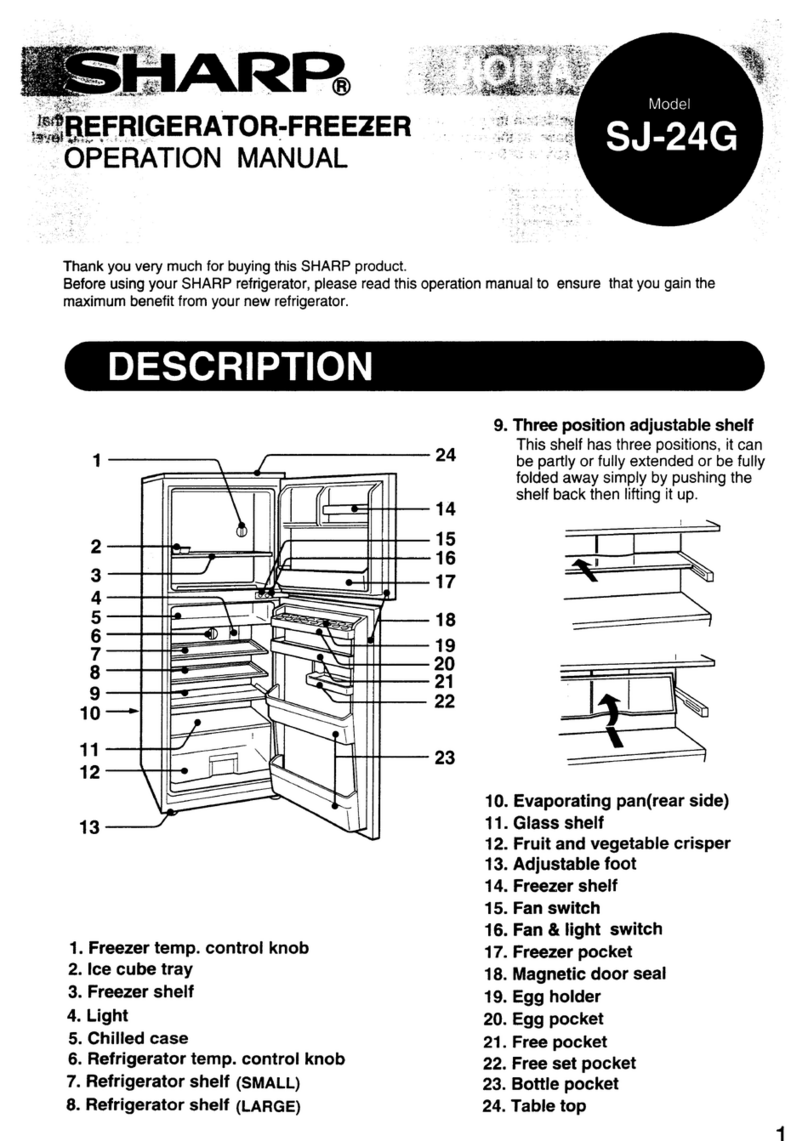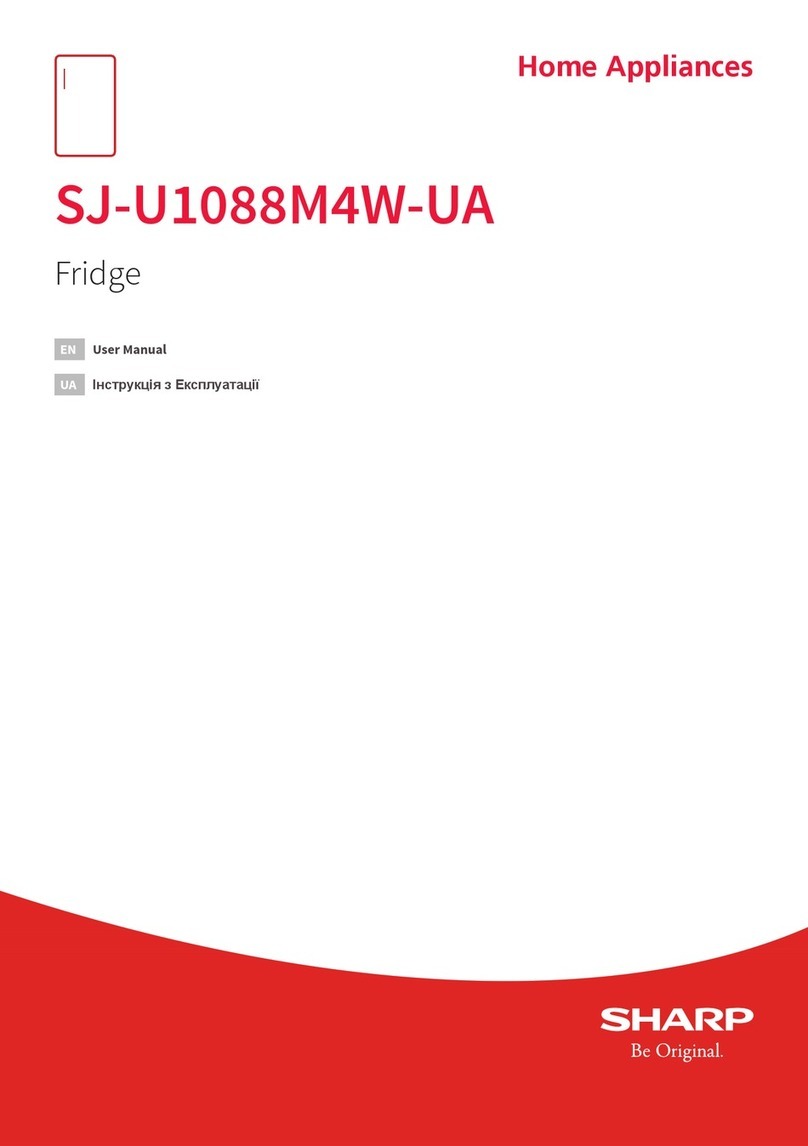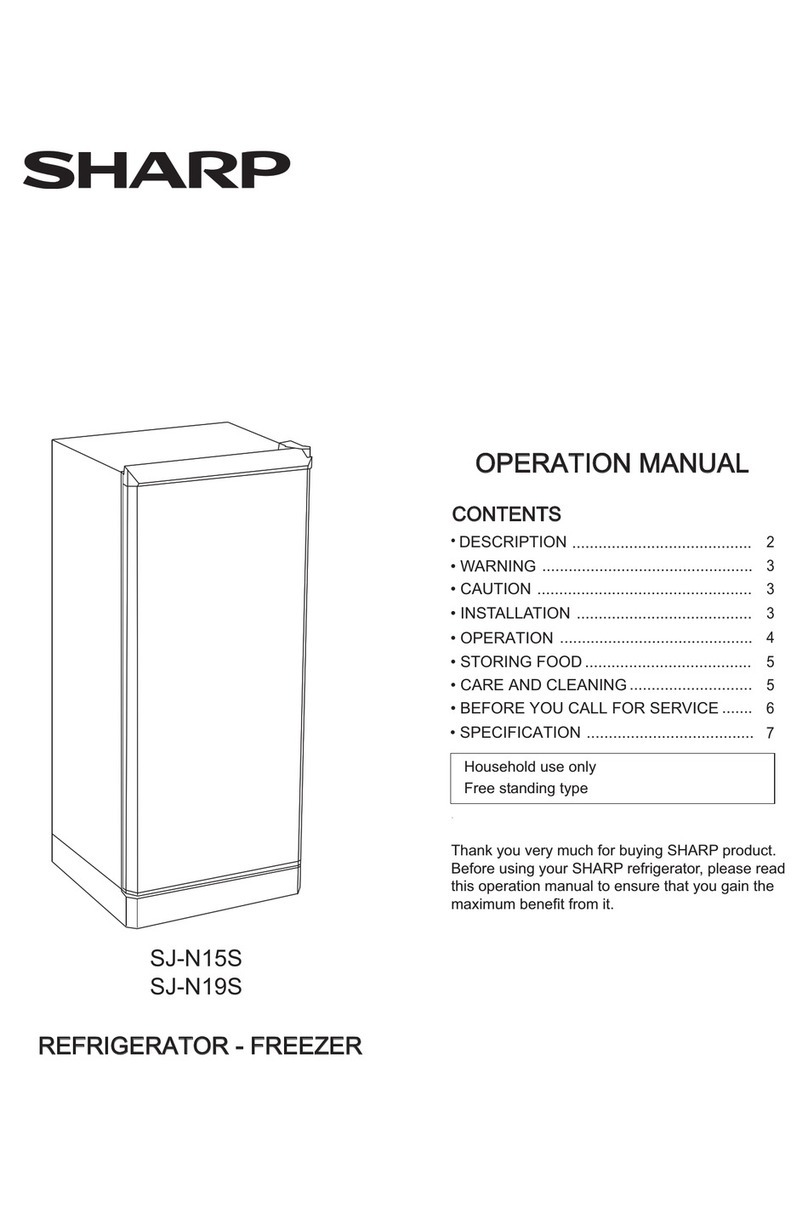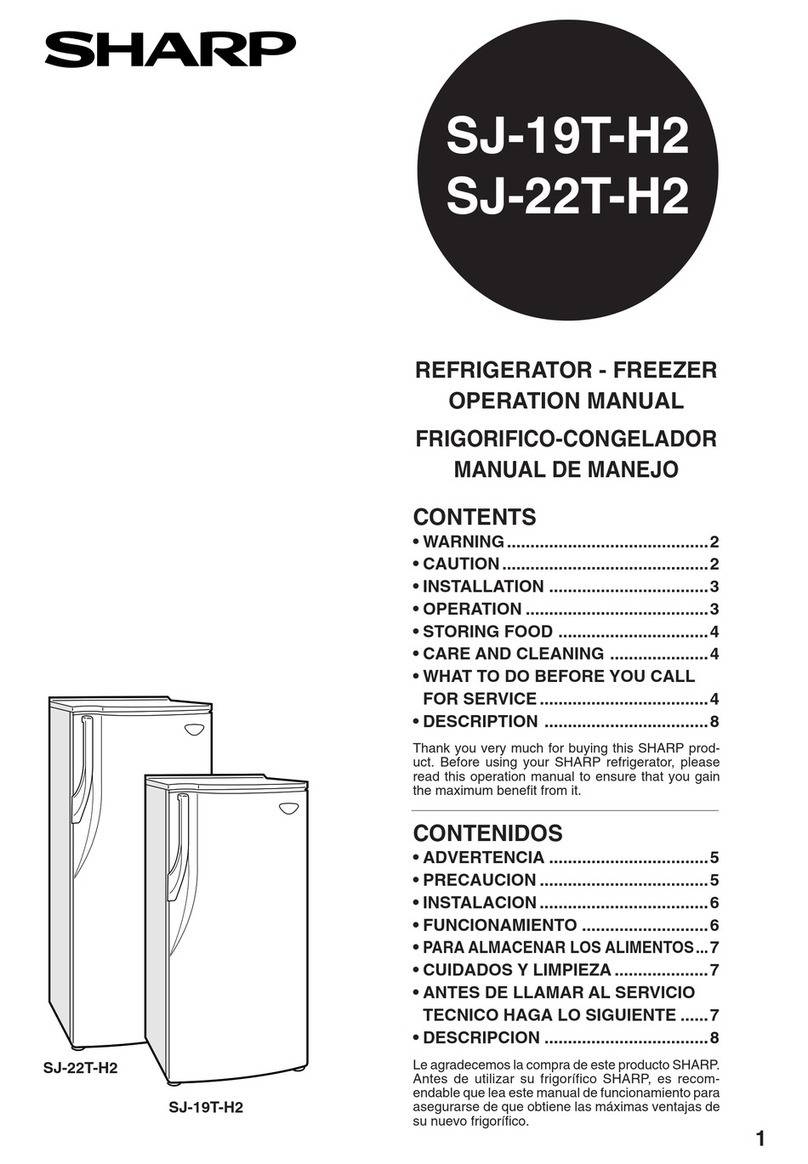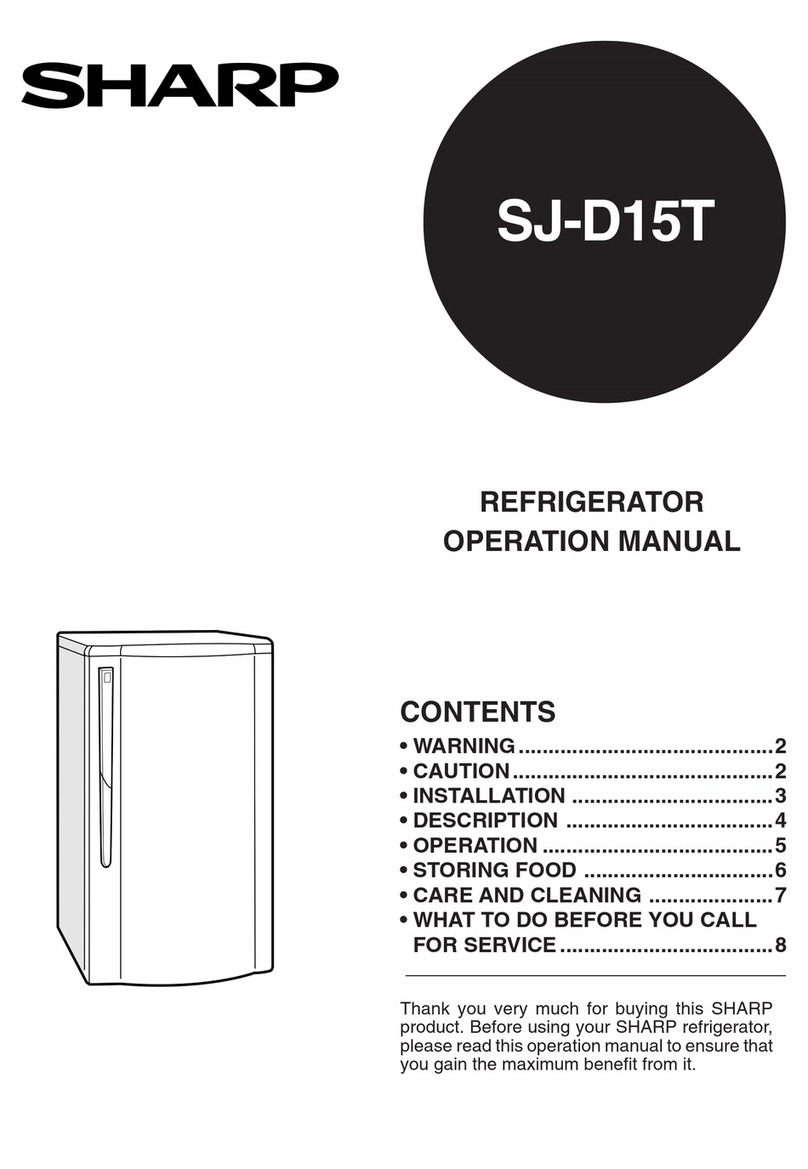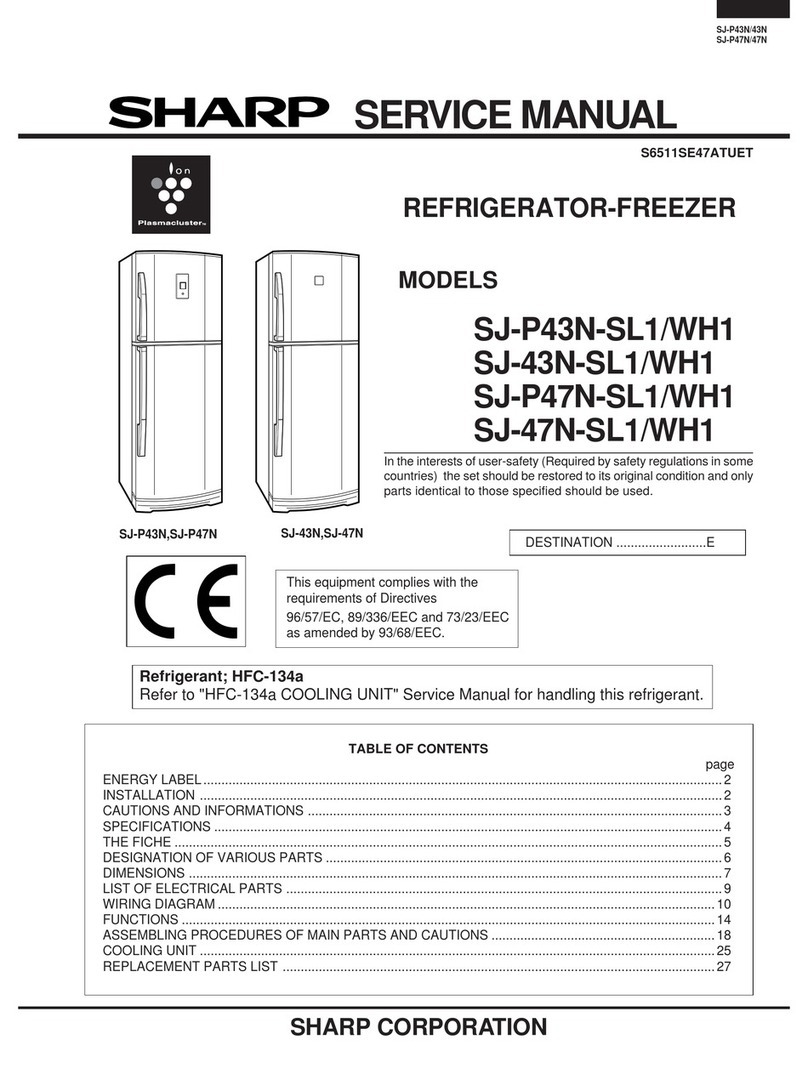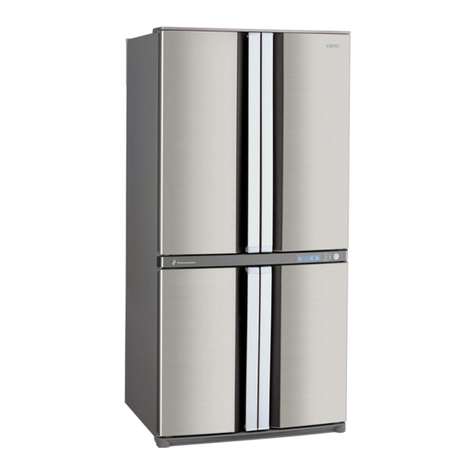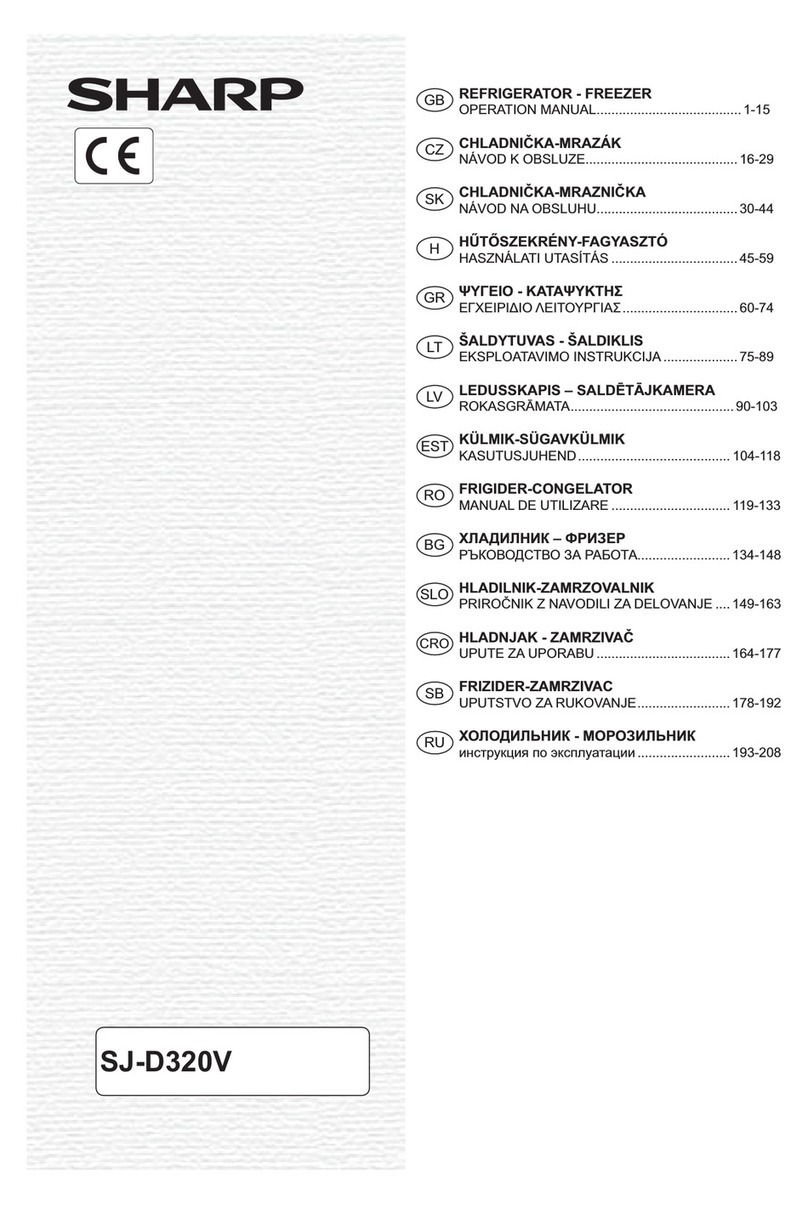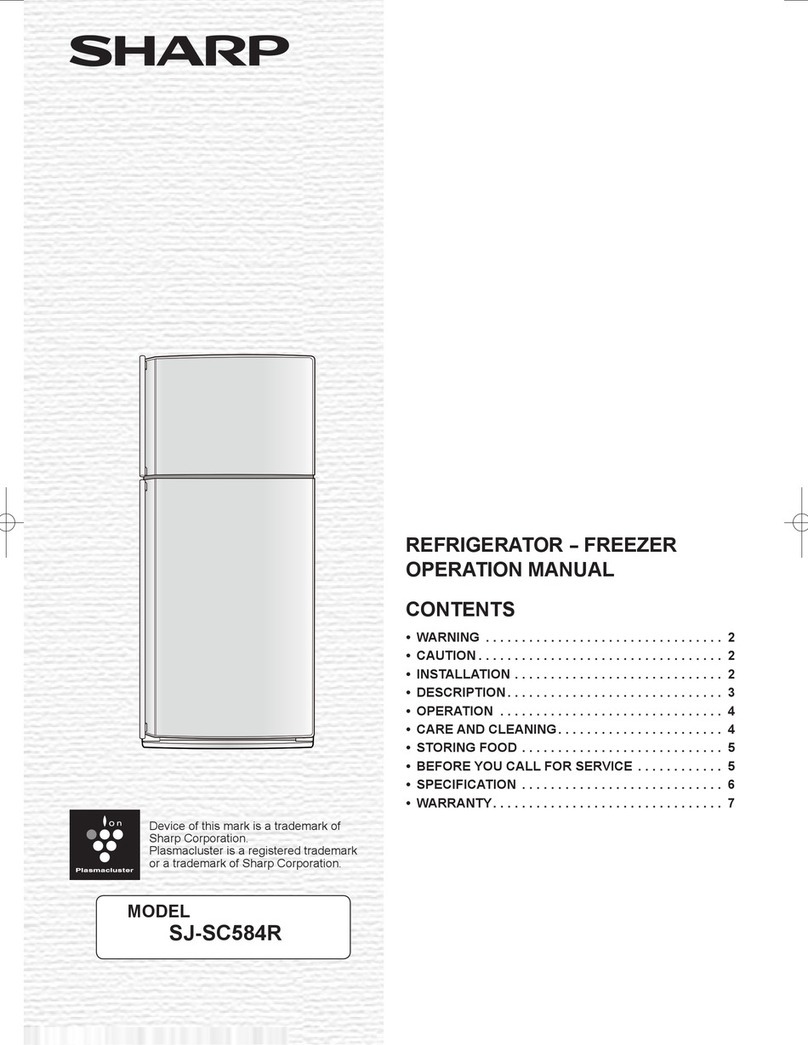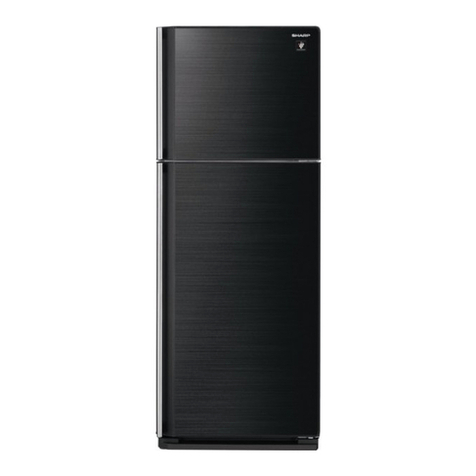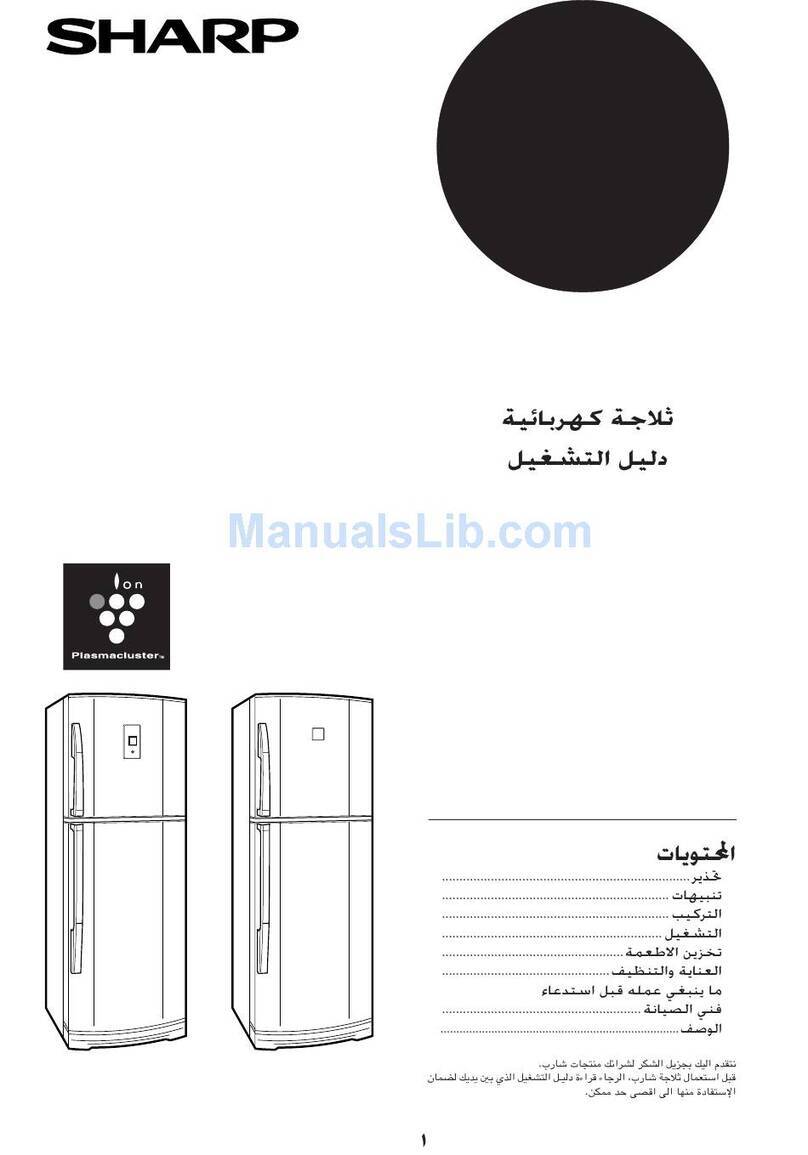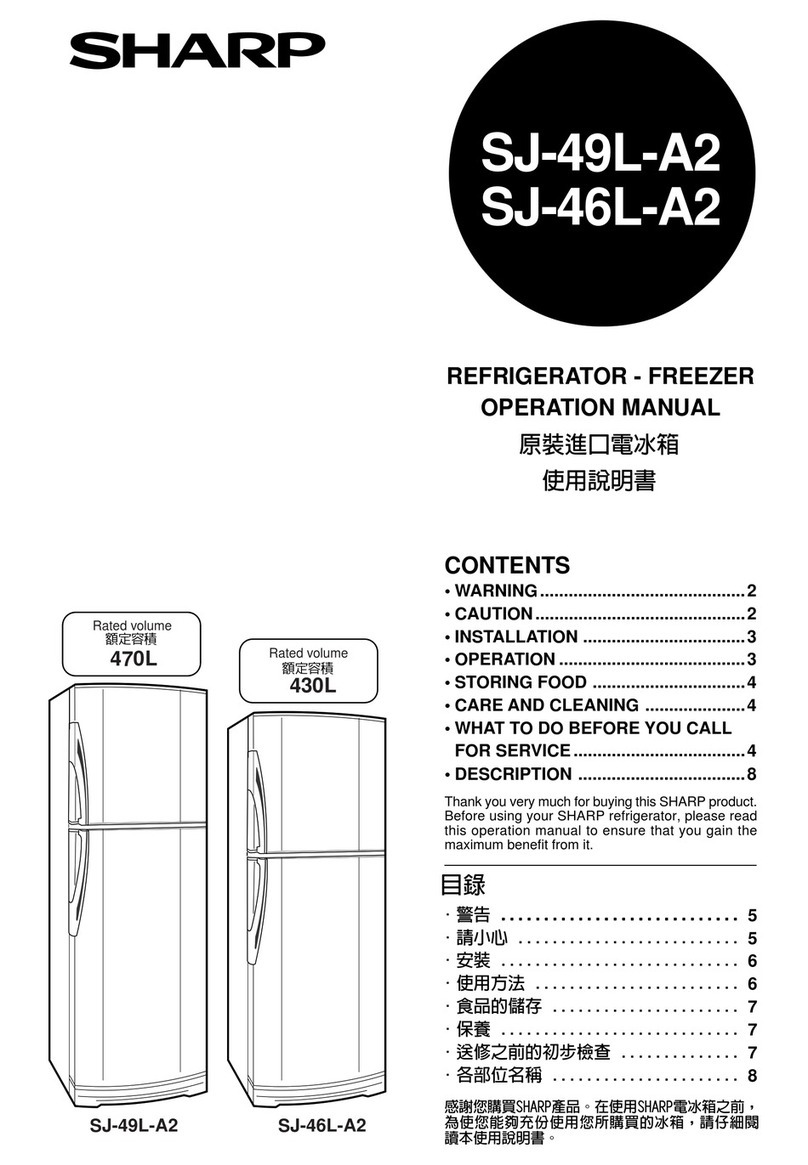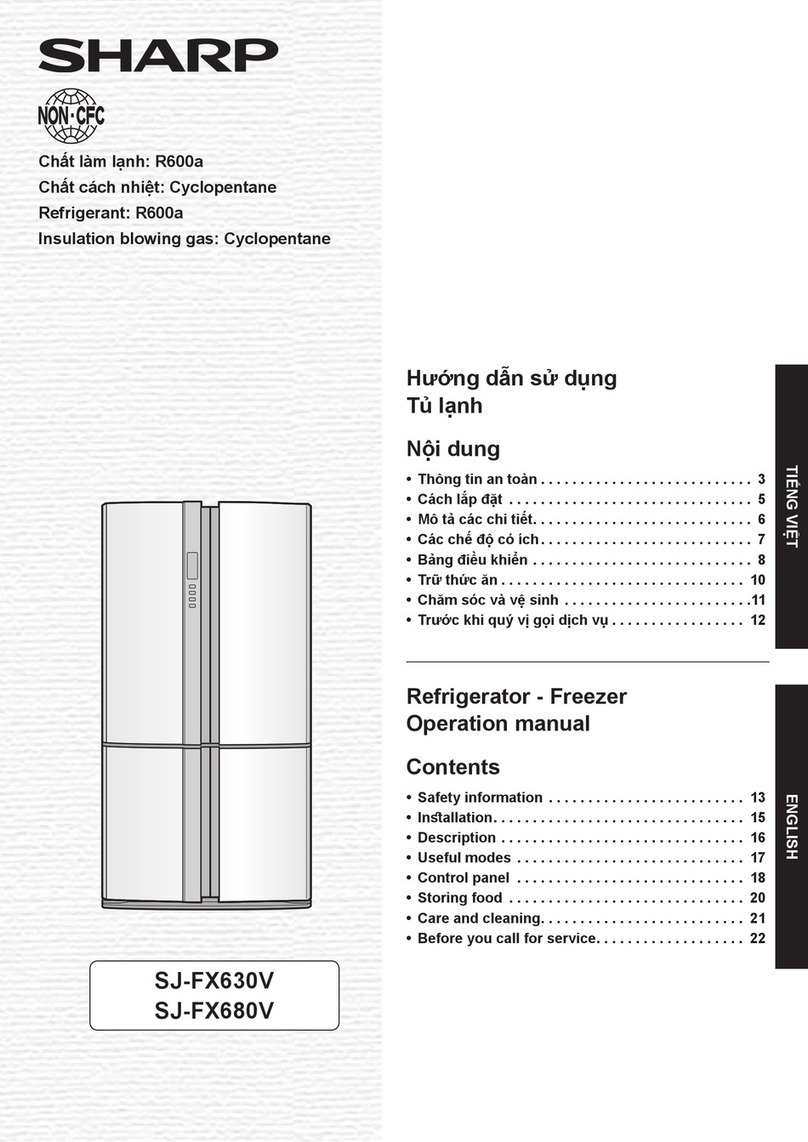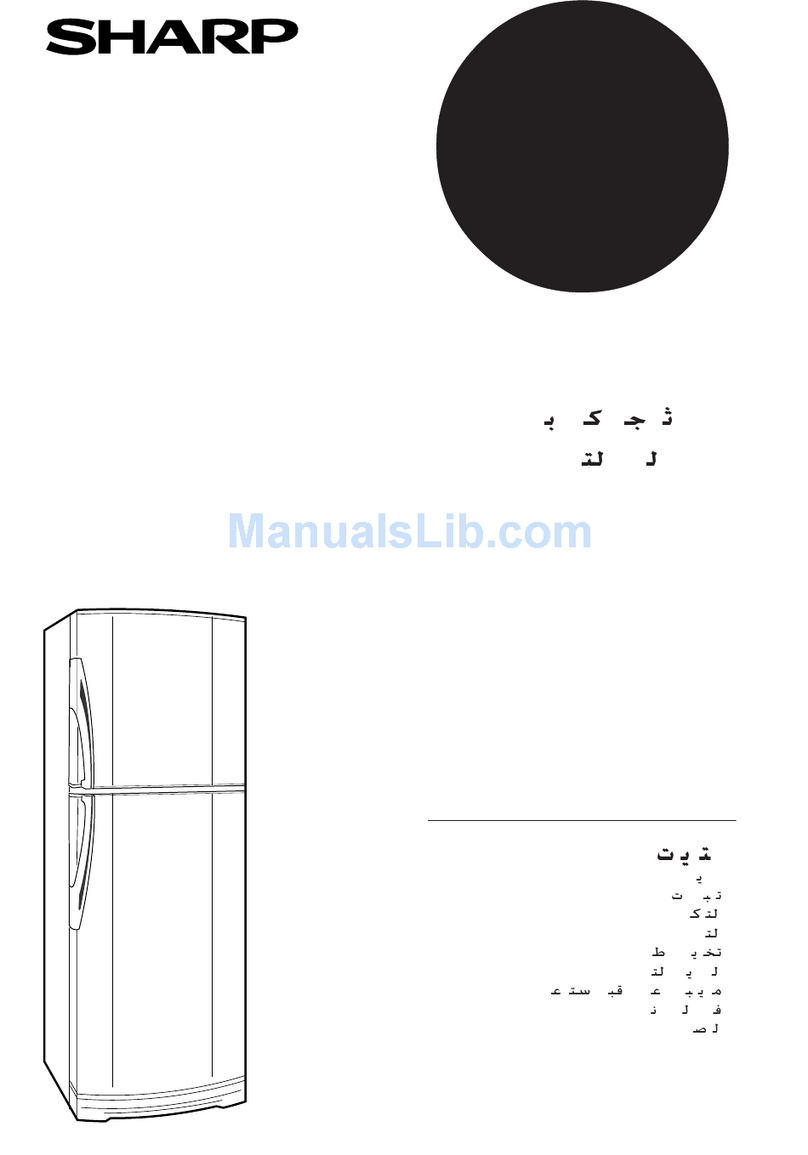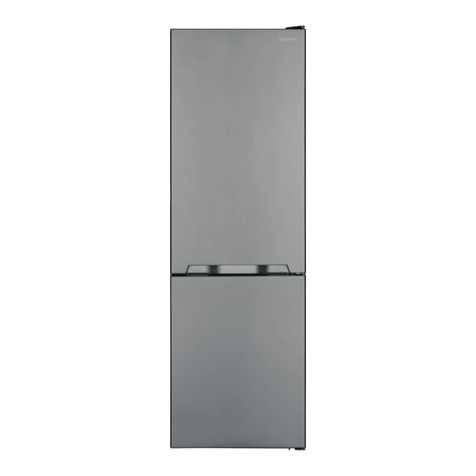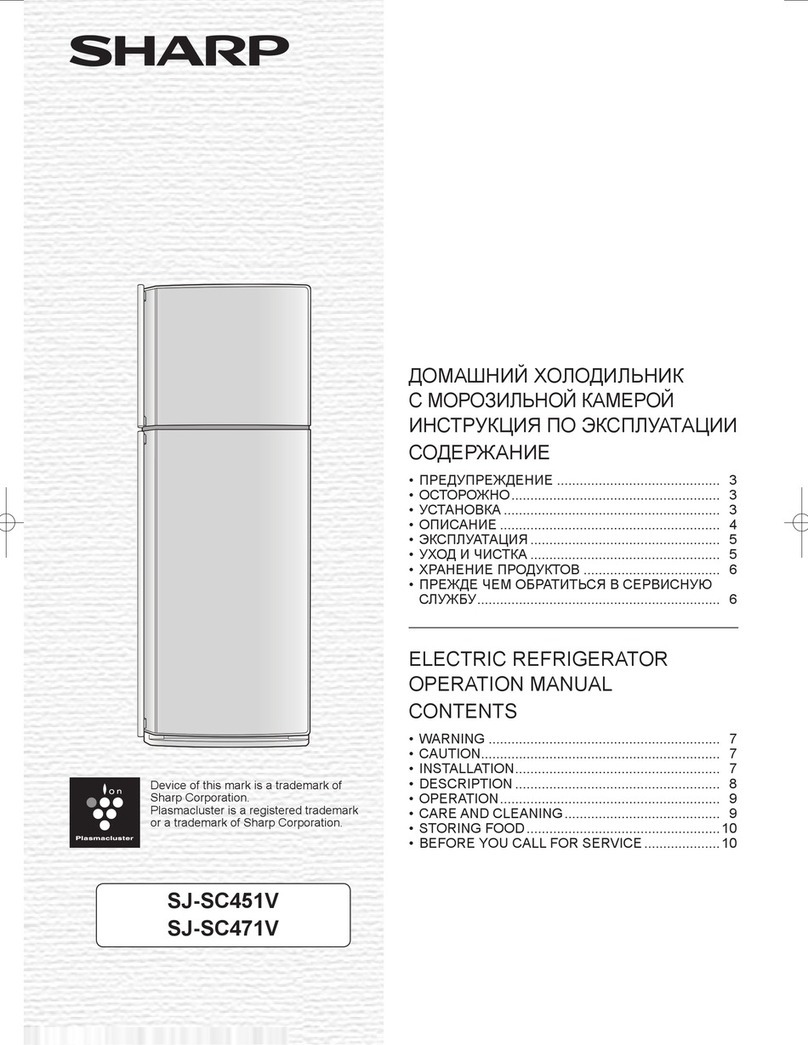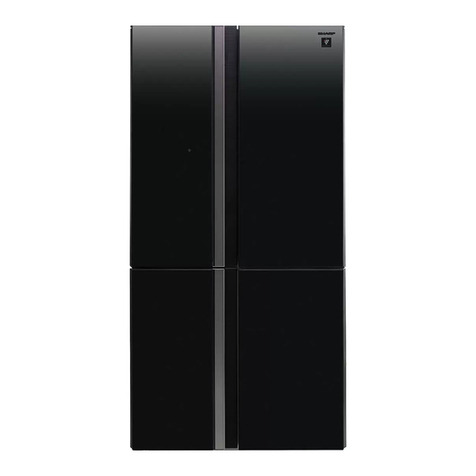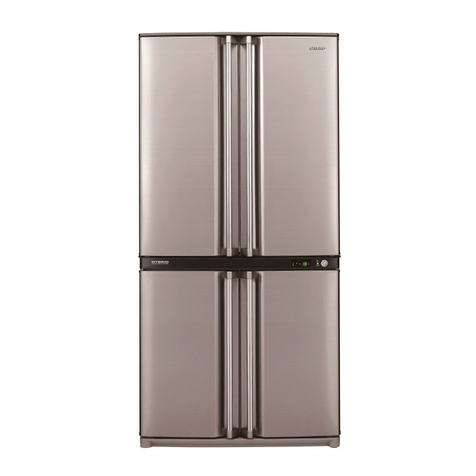
EN -6-
CHAPTER -1: SAFETY INSTRUCTIONS
Installation warnings
Before using your fridge for the rst time, please pay attention to the following points:
• The operating voltage for your fridge is 220-240 V at 50Hz.
• The plug must be accessible after installation.
• Your fridge may have an odour when it is operated for the rst time. This is normal and the odour will fade when
your fridge starts to cool.
• Before connecting your fridge, ensure that the information on the data plate (voltage and connected load)
matches that of the mains electricity supply. If in doubt, consult a qualied electrician.
• Insert the plug into a socket with an efcient ground connection. If the socket has no ground contact or the plug
does not match, we recommend you consult a qualied electrician for assistance.
• The appliance must be connected with a properly installed fused socket. The power supply (AC) and voltage at
the operating point must match with the details on the name plate of the appliance (the name plate is located
on the inside left of the appliance).
• We do not accept responsibility for any damages that occur due to ungrounded usage.
• Place your fridge where it will not be exposed to direct sunlight.
• Your fridge must never be used outdoors or exposed to rain.
• Your appliance must be at least 50 cm away from stoves, gas ovens and heater cores, and at least 5 cm away
from electrical ovens.
• If your fridge is placed next to a deep freezer, there must be at least 2 cm between them to prevent humidity
forming on the outer surface.
• Do not cover the body or top of fridge with lace. This will affect the performance of your fridge.
• Clearance of at least 150 mm is required at the top of your appliance. Do not place anything on top of your
appliance.
• Do not place heavy items on the appliance.
• Clean the appliance thoroughly before use (see Cleaning and Maintenance).
• The installation procedure into a kitchen unit is given in the installation manual. This product is intended to be
used in proper kitchen units only.
• Before using your fridge, wipe all parts with a solution of warm water and a teaspoon of
sodium bicarbonate. Then, rinse with clean water and dry. Return all parts to the fridge after
cleaning.Use the adjustable front legs to make sure your appliance is level and stable. You
can adjust the legs by turning them in either direction. This must be done before placing
food in the appliance.
• Install the two plastic distance guides (the parts on the black vanes -condanser- at the rear)
by turning it 90° (as shown in the gure) to prevent the condenser from touching the wall.
• The distance between the appliance and back wall must be a minimum of 75 mm.
Electrical information (For UK type plug)
Warning! This appliance must be earthed.
The mains lead of this appliance has been tted with a specially earthed plug.
Important: Do not use the appliance without the fuse cover in
position. Should the fuse need to be replaced, it must be replaced with a 13A
fuse, ASTA approved to BS1362.
The plug must be used with a specially earthed socket of 13 amperes. If there
is no such socket in your house, please have one installed by an authorised
electrician.
The mains lead of this appliance has been tted with a BS 1363A 13A fused plug.
To change a fuse in this type of plug, follow the steps below:
1. Remove the fuse cover and fuse.
2. Fit replacement 13A fuse, ASTA approved to BS 1362 type, into the fuse
cover.
3. Replace fuse cover.
